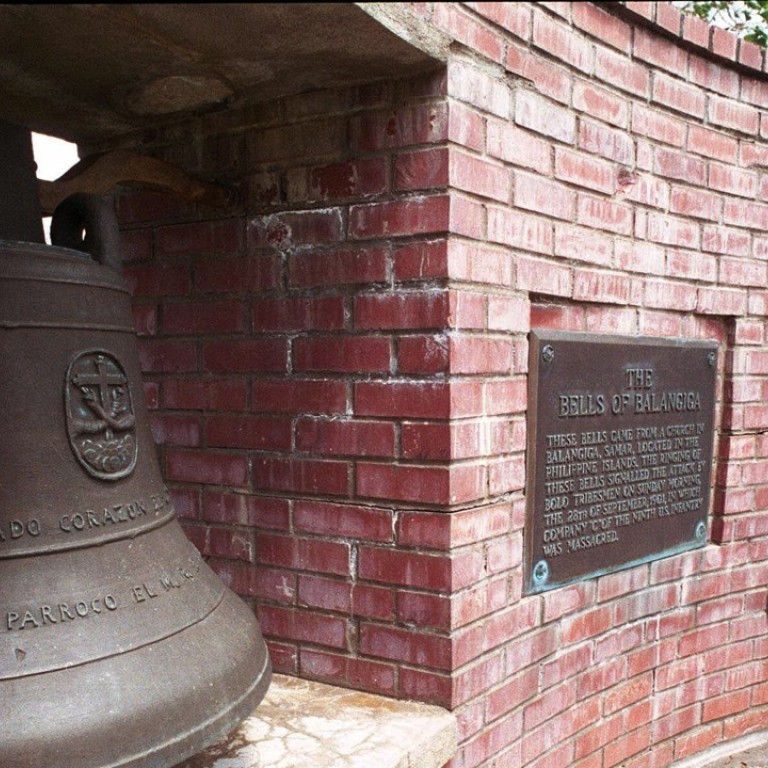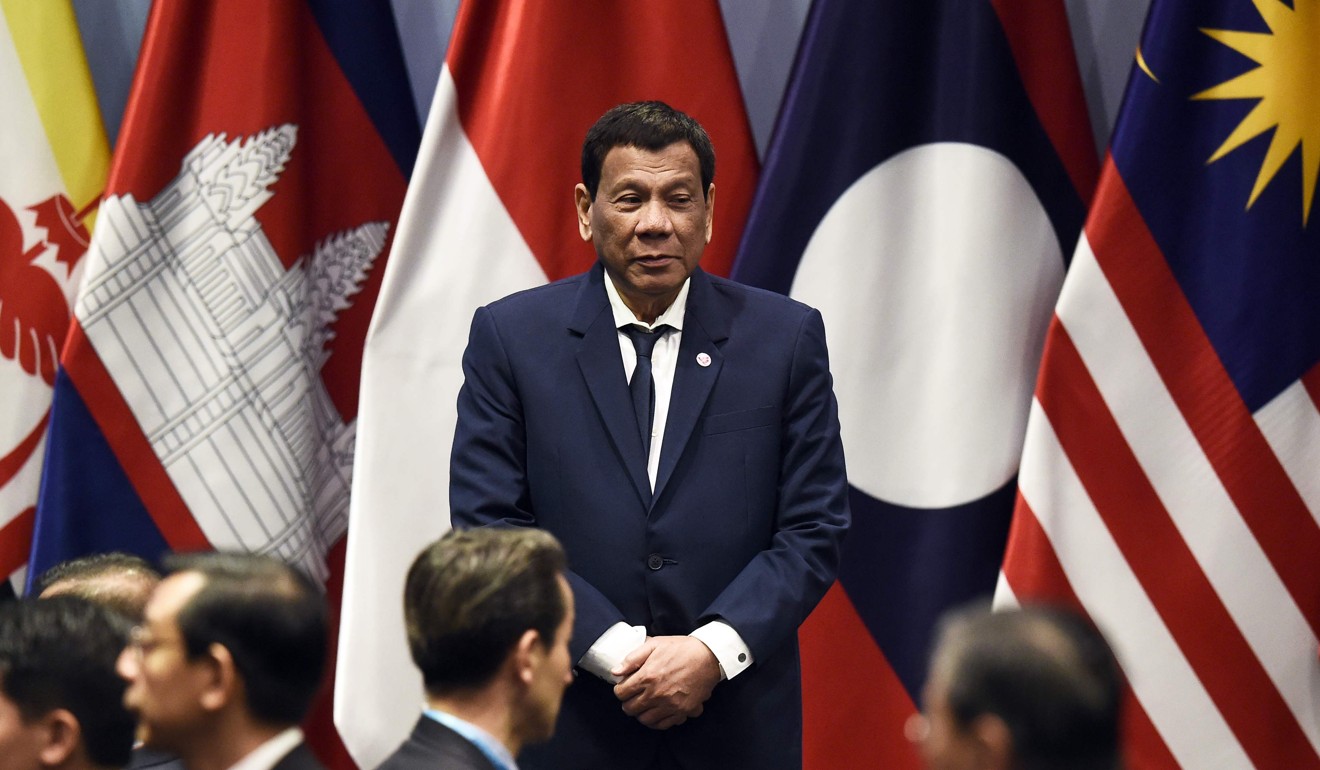
US returning pillaged Philippine church bells, 117 years after they were stolen
- The ‘Balangiga Bells’ were spoils of war seized by US soldiers in 1901 following one of the bloodiest clashes of the Philippine-American war
- President Rodrigo Duterte has lobbied for the bells return, saying he would not even visit the US until they were given back
The bells tolled on September 28, 1901, to signal an early-morning attack on American troops, just as they were eating breakfast. The attack almost wiped out the company of American soldiers, killing 48 of them in a rare victory in a war that the Philippines would end up losing.
The US commander’s response was swift. He ordered the killing of all Filipino males above the age of 10 who were involved in fighting US forces. The Americans razed the town of Balangiga, which had been abandoned, and took home the three church bells as war booty.
More than a century after one of the most gruesome clashes of the Philippine-American war, the “Balangiga Bells” are officially being returned to the Philippines.
Speaking at an Air Force base close to Cheyenne, Wyoming, where two of the three bells are located, Defence Secretary James Mattis said the return of the bells will “smooth the bonds that were tested but never broken by war.”

“Bear these bells home back to their Catholic Church, confident that America’s ironclad alliance with the Philippines is stronger than ever,” Mattis said to Jose Manuel Romualdez, the Philippine ambassador to the United States, who was present at the ceremony. The last of the three bells, located at a US Army museum in South Korea, has already been prepared for its return.
The two bells in Wyoming will first be shipped to a facility in Philadelphia, before joining the third bell in South Korea. All three are expected back in the Philippines by the end of the year.
Caught between the US and China, for the Philippines a trade war is an opportunity
The Philippines, a close US ally, has been urging the United States for decades to return the bells, a symbol of national pride. Campaigners who lobbied to return the bells told Philippine television networks that US veterans’ organisations eventually came around to the belief that the bells belonged in the Philippines, and their support helped facilitate the eventual return.
But the administration of President Rodrigo Duterte, the strongman Philippine leader who has tried to move his country away from its traditional alliance with the United States, has already started claiming the victory as his own.

Duterte has lobbied for the return of the bells and has said he would not visit the United States until they were back. Speaking at a news conference on the sidelines of regional summits in Singapore, Foreign Affairs Secretary Teddy Locsin Jnr, who was previously his country’s ambassador to the United Nations, said he had brought up the issue with Nikki Haley, the outgoing US ambassador to the United Nations.
They’re coming back, so [Duterte] will have to go … to the United States, if that was the condition he made
He also told Haley that Duterte would not visit the United States until the bells were returned.
“Later on, throughout the year, she’d call me aside and say, ‘OK, I’ve brought it up with Mattis, and Mattis said as far as the Defence Department goes, we are OK,’” Locsin said, recounting a conversation he had with Haley earlier in the year.
The diplomatic gesture comes at a pivotal time for relations between the Philippines and the United States. Duterte, a populist president, has cozied up to China since his election in 2016, and he will host Chinese President Xi Jinping in Manila later this month on Xi’s first visit to the country. Meanwhile, Duterte has described the United States as “lousy” and vowed to never go there during his term. His brand of politics has marked a major turning point for the United States in the Philippines, a country that was once its most reliable ally in the region.
Now that the bells are on their way back though, Locsin said, Duterte may have to visit Washington after all.
“They’re coming back, so he will have to go there, to the United States, if that was the condition he made,” Locsin said. He added that he had reminded the Philippine president of the exchange with Haley. Duterte simply “laughed [and] smiled,” Locsin said.
Duterte defends skipping Asean meetings to take ‘power naps’

